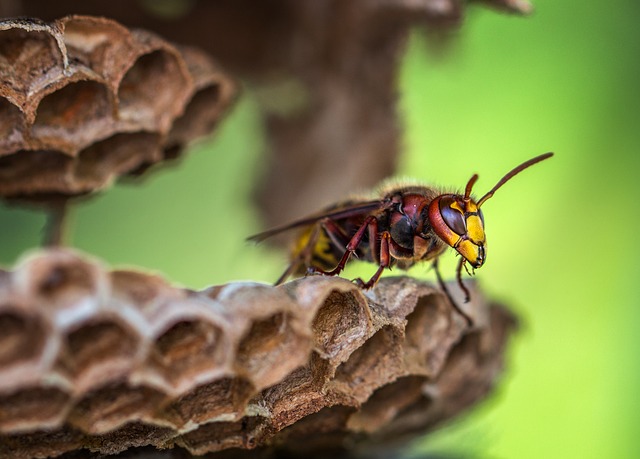Her Majesty the Queen Bee presents the royal recipe for cooked hornets. What you need: a fresh live hornet, 20-25 strong worker bees, and a few minutes time. Cover the hornet with the worker bees, set the wings to vibrate, and cook the hornets at around 43 ° C for several minutes.

These instructions are by no means fun. Admittedly, the bees are of course not interested in preparing a delicious meal. But the honey bees are actually able to cook hornets. How exactly and why they do it is an exciting story.
The bees defend their beehive very vigilantly against all kinds of predators and enemies. Nobody who does not belong to the beehive is allowed to enter the inside. Regardless of whether it is a wasp, mouse, badger, or bear: anyone who dares to approach the entrance hole or wants to steal the precious honey will be put to flight by the watchful guardian bees with painful stings. In the case of large mammals, it is the pain that is supposed to keep the animals from the planned robbery. For smaller insects, the stings are deadly. The Venom kills the predators and the hive is saved. For the hornets, this method doesn’t work though. The tough hornets are unimpressed by stings and immune to the bee venom. The hornets just don’t give a fuck. They carry on with their mission.

Especially in late summer, many hornets are looking for some sweet treats. The scent of honey from the entrance hole attracts some daring hornets to the bees. Brave and without considering the danger of this action, many a hornet ventures past the stinging guards at the entrance hole into the interior of the bee colony. The bee venom doesn’t bother the hornets. No matter how many stings they get, the bee venom cannot stop the large insects from plundering the precious honey supply. A hopeless situation for the bees? Not at all. The clever honeybees have developed a very special defense method especially for the hornets: They cook the hornets.
The basis for this strange action is that hornets are more sensitive to heat than bees. The hornets die at temperatures above 42 ° C. Bees, on the other hand, can withstand temperatures of up to 44 ° C for a short time. This tiny difference in heat tolerance enables the bees to use heat to kill the hornets without harming themselves. To do this, numerous bees surround the hornet and begin to vibrate their wings to generate heat. The ball of hornet and bees is heated to a temperature of just over 42 ° C within a few minutes. So the poor hornet is slowly being cooked to death. The brave worker bees, on the other hand, survive this brief temperature rise unscathed.
With this method, the bees manage to defeat the robust intruders without their sting. Of course, the hornets are not eaten by the bees. They didn’t cook them for Food. It was purely a defense. But the dead hornets are then too heavy for the little workers to carry out. So that the lifeless hornet does not rot inside the beehive and spreads germs and diseases, the dead hornet is mummified by the bees. Yes, you read that right. The bees mummify the dead hornets. In fact, bees invented mummification. The Egyptians copied this technique from bees and refined it. And the bees don’t just mummify hornets, but every animal that perishes within the beehive and is too heavy to carry out. The lifeless bodies are prepared by the bees and then embalmed with propolis. But that’s a story for another day.
Text: Fabian Kalis
Pictures: www.pixabay.com